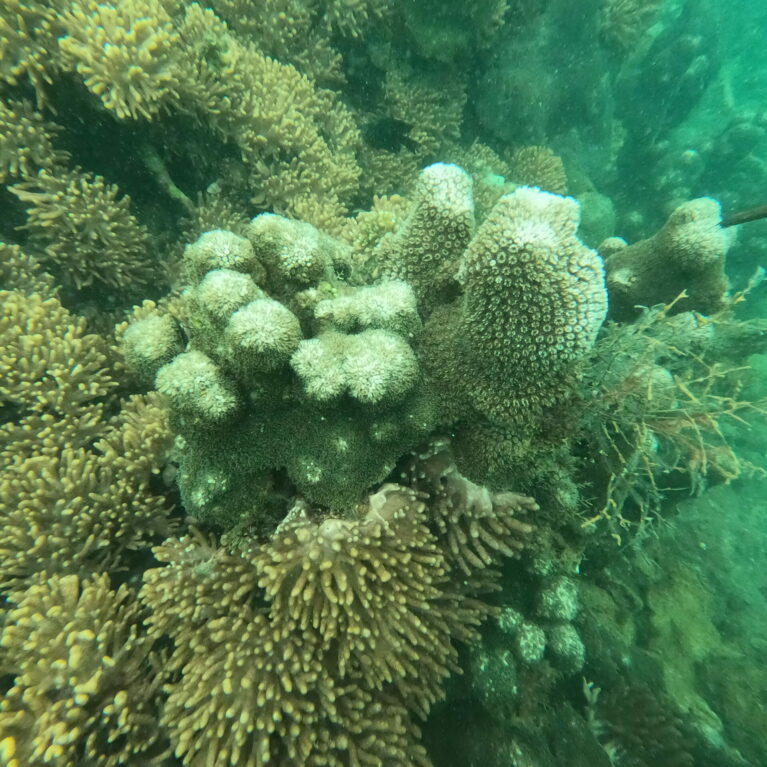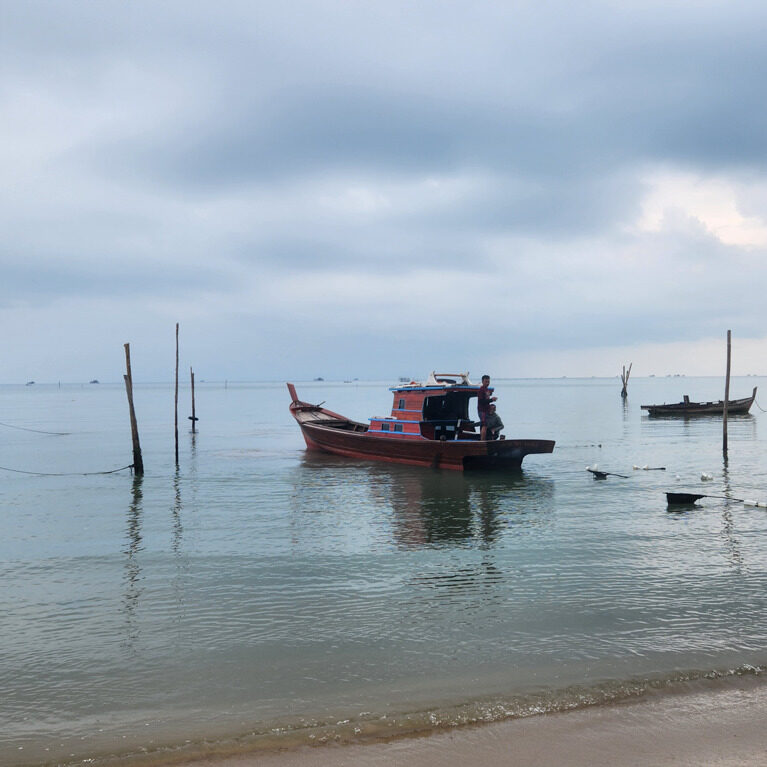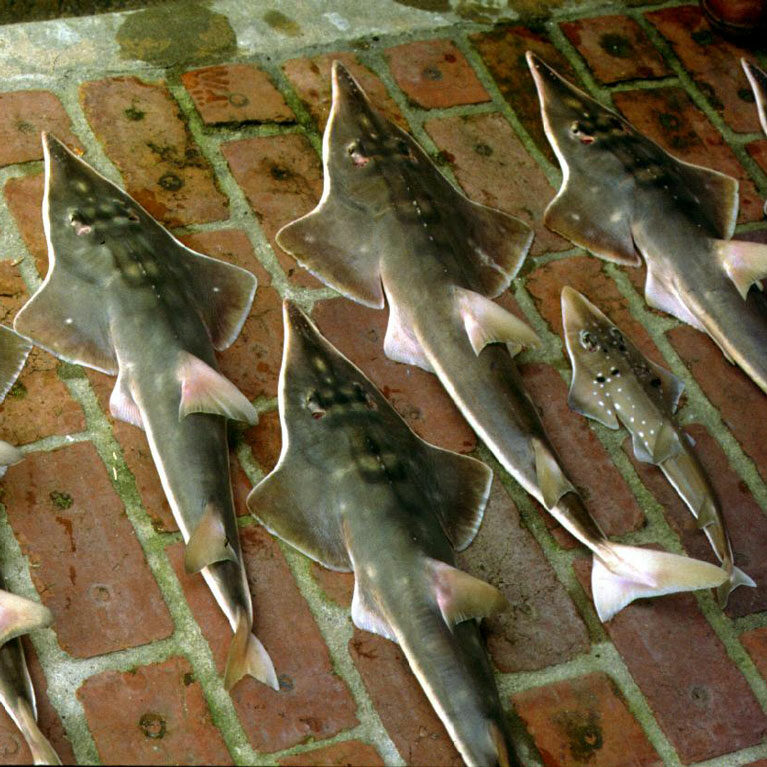The clown wedgefish: no laughing matter
Peter credits the recent location of the rare and relatively unknown clownfish wedgefish to searching social media posts of wedgefish catches. But his focus now is ground-truthing where this species occurs in the wild, and what habitat it uses. For this, he is engaging with local fishers around the Riau Islands in Indonesia. Using local knowledge and participatory mapping, fishers will guide Peter and his team to where to collect environmental DNA (eDNA), a relatively new and rapidly evolving tool that uses genetic techniques to search for the DNA of the target species – in this case, the clown wedgefish.
I grew up on the doorstep of the stunning Ninety Mile Beach, east of Melbourne in southern Australia. That connection to the beach fostered an early love for the ocean that ultimately led to my career in marine conservation. After undergraduate studies in Melbourne, I gradually migrated northwards to Brisbane to undertake my Honours degree on a local rhino ray species (the eastern shovelnose ray), followed by my PhD on reducing shark and ray by-catch in a trawl fishery. My first job post-PhD would lead me to Darwin in northern Australia, a remote and vibrant tropical city closer to many...



The clown wedgefish: no laughing matter
The clown wedgefish is one of the most threatened and poorly known species in the world. This project will use various tools to determine the geographic range and habitat of this species and undertake planning to secure its future, as well as the future of rhino rays more broadly.
Wedgefish are among the most threatened species on the planet. They are intensively harvested for their meat, their snouts and their highly valued fins, and exploitation has driven severe declines in all species. The clown wedgefish is one of the least known of the wedgefish and may be on the verge of extinction. Given its extremely precarious status, the urgency of our international partnership to understand its geographic range and habitat and to conserve this species cannot be overstated.
Rhino rays are some of the most threatened fishes. This is a diverse group of shark-like rays characterised by some sort of extended snout or ‘rostrum’, a feature most pronounced in the sawfish, which have long, tooth-studded snouts. Because of these rostrums, sawfish easily become entangled in fishing nets, to the extent that they are now extinct in many countries and are highly threatened. Unfortunately, other groups of rhino rays – the giant guitarfish and wedgefish – have joined the sawfish as being of urgent conservation concern. All six species of giant guitarfish and nine out of 10 species of wedgefish are now considered to be Critically Endangered (that is, they face an extremely high risk of extinction). The Indo-West Pacific Ocean is the centre of rhino ray diversity. South-East Asia, and Indonesia in particular, has high species richness. Rhino rays face considerable fishing pressure across much of this region. Their occurrence in shallow coastal waters results in high overlap with fishing activities. They are susceptible to being caught in a wide variety of fishing gear and high levels of exploitation have driven severe population declines. The clown wedgefish is the least known of the Indo-West Pacific wedgefish and possibly the rarest. Historical records of it are limited to fish markets in Jakarta and Singapore and it had not been seen for more than 20 years, until there was a record of one found in a Singapore fish market in 2019. Despite considerable coverage of fish landing sites by the scientific community, there is little other evidence of the species’ presence and its wild range remained a mystery. Matt McDavitt of the Sawfish Conservation Society, and one of the clown wedgefish project team, recently identified the first record of the species’ occurrence in the wild by means of social media searches. However, its full contemporary range is still unknown, presenting a major conservation challenge (it is difficult to conserve a species when you don’t know where it lives). The clown wedgefish project aims to address that challenge.
This project aims to secure a future for the clown wedgefish and will take an international, multi-disciplinary approach to define the distribution and status of this Critically Endangered species, promote its status (and that of rhino rays more broadly) locally and nationally in Indonesia, and plan for its long-term conservation and recovery. The project has five central components:
· Community-based interviews and participatory distribution mapping. The interviews will gather information about fishing effort, catches of rhino rays and other sharks and rays, the economic value of catches, and how the rays are used and the trade in them. The participatory mapping will identify fishing grounds, the occurrence of clown wedgefish and the habitats in which they are found.
- Training of local small-scale fishers and traders to record catch information. The training will include identifying species, photographing fish and collecting catch data. We will develop a identification guide for local species in Bahasa Indonesian for distribution as part of the project’s training and education components.
- Environmental DNA (eDNA) surveys, which will be undertaken in parts of the Riau Islands using an eDNA assay specifically designed to detect clown wedgefish. Analyses of eDNA will use technology that allows for the most sensitive detection and the highest likelihood of discovering rare species.
- Conservation planning. The clown wedgefish will be used as a flagship species for provincial-level conservation planning for rhino rays. A conservation planning workshop led by local agencies will bring together wide stakeholder perspectives to plan for the future of the clown wedgefish.
- Policy outreach. We aim to convert the knowledge gained into policy. Local partners will take the outcomes of conservation planning to Jakarta to give the government the information needed to drive policy change aimed at rhino ray conservation.This project is an international collaboration between Indonesian fishers and community partners, Australia (Charles Darwin University) and the USA (University of Southern Mississippi).

